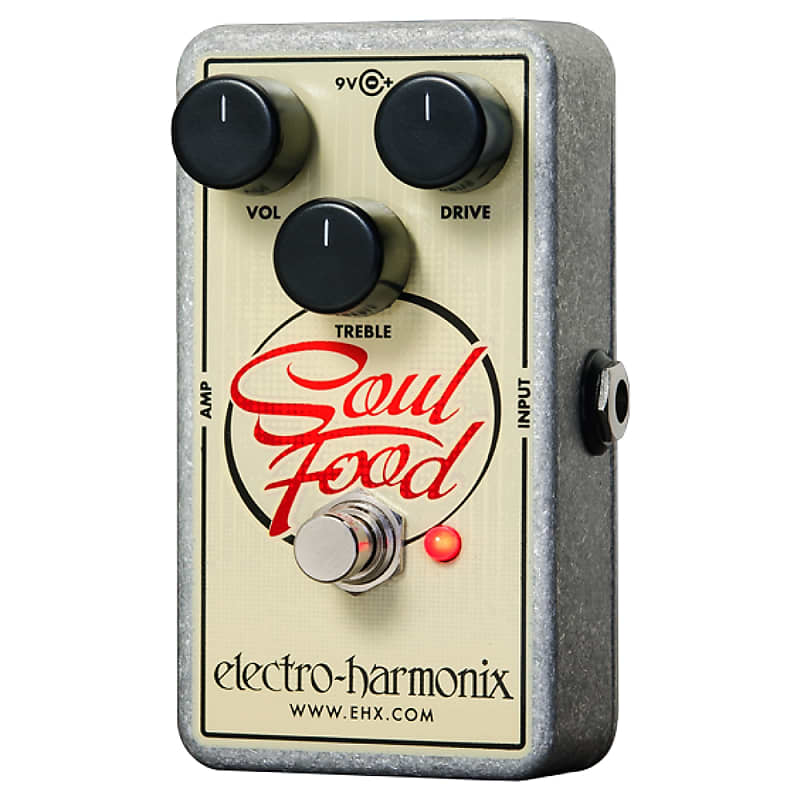




30-Day Return Policy
Free 2-Day Shipping





30-Day Return Policy
Free 2-Day Shipping




| Brand | |
| Model |
|
| Finish |
|
| Year |
|
| Categories |

*Excludes Brand New, B Stock, Fair, Poor, and Non-functioning. Prices exclude shipping and tax/VAT/GST.
There are very few stompboxes that have fostered lore, worship and debate like the Klon Centaur. Some might argue that no other pedal is as hallowed. The Klon stands alone as an industry-shaping force that tore through players’ and builders’ notions of what a rich transparent overdrive can be. Since Bill Finnegan created the first Centaur in 1994, the hand-made unit has been the grail for amateur players and a must-have for many professional rockers. That sentiment has only grown since production stopped in 2009. The current used market price for an original Klon - between $1400 and $2000 - reflects this skewed supply and demand curve. So much has been written and filmed about the Klon and its kin that there’s no need to go on about what the Soul Food pedal is chasing.
Electro-Harmonix is a huge manufacturer, with vintage effects roots going back to the ‘60s. With plenty of resources and talent on hand, Mike Matthews and his team decided it was finally time to create an affordable, large scale production Klon replica. While some well known clones were already in production (see the Aluminum Falcon), no established company had attempted something so large scale and announced it so clearly that they were aiming for the Klon. Whether or not you think the Soul Food pedal nailed the particulars, its success as an overdrive is undeniable. Let’s face it: the EHX Soul Food is in the same league as the Klon, giving you 95% of the tone for 3% of the cost. You could hold out for a Klon, but you could also just get the Soul Food now and spend countless happy hours dialing in your tone. At least that way you’ll have plenty of context for an opinion if you ever do pull the trigger on the real deal.
The Soul Food is in the same league as the Klon, giving you 95% of the tone for 3% of the cost
In general, overdrive pedals give your tone more presence and thickness while creating flavors of dirt depending on your attack, volume knob and gain level. For some players it is an “always on” effect, essentially breathing life into their signal chains and eliminating the need to dime their amps to achieve that satisfying breakup. For others, it is a “sometimes on” effect, reserved only for solos or a heavy chorus. Regardless of how it is used, most players prize transparency and rich harmonics in an overdrive.
Transparency, for those wondering, is the quality of maintaining your guitar’s original characteristics and the nuances of your attack while driving the signal. An amp does this wonderfully as you turn up the volume. A truly transparent overdrive will sound like no pedal is involved. A Strat played through a transparent overdrive will still sound like a Strat (think SRV, though his Tube Screamers were arguably less transparent than a Klon), with all its snappy, bell-like pop, just edgier with a touch of breakup. A non-transparent overdrive adds its own color to the tone, making it harder to identify the true character of the guitar or the player’s personal tone. Harmonic content is generated as the signal breaks up, and this takes on different flavors depending on how the pedal is set up.
Both the Klon and the Soul Food pedal are excellent transparent overdrives, with some fantastic sweet spots where the signal hovers between clean and breakup, allowing players to add dirt with the touch of their fingers. Both also have rich overtones when cranked up, though the they don’t get the same tones at the same settings. Some find that the Soul Food is initially brighter and operates as a clean boost for longer when dialing in the dirt, but both are very touch-sensitive, dynamic and robust.
That short answer is no. Given that Bill Finnegan initially covered up his internal handiwork with epoxy, it’s hard to say exactly how much the EHX Soul Food differs. You can look up the reverse-engineered schematics that were released in 2007 and compare it to a ripped open Soul Food if you’re feeling ambitious. We do know that both use TL072 op-amps and dual-gang gain controls. However, the stock Soul Food pedal comes with silicon clipping diodes, where the Klon uses germanium diodes. Bill Finnegan still holds that the rarity of these original clipping diodes is a big obstacle for any clone to get the exact same sound.
Absolutely not. The creation of the Klon (and by consequence, the Soul Food) came about a result of Bill Finnegan’s dissatisfaction with Tube Screamers in early 1990s. Searching for that “amp at 8” sound without actually turning the volume up that high, TS9s and TS808s were natural starting points. However, he found that they compressed the signal too much and lost low-end definition when cranked. The Klon and Soul Food both retain bass clarity and open, full sound as you march the gain higher. Some people like the compression and mid-range growl that Screamers add, so it’s not a matter of better - just different.
It’s true - you can hardly scroll through a single page of Reverb listings without seeing at least one boutique or DIY Klon clone. If for no other reason, the Soul Food pedal is different because of the cost. You’d be hard pressed to find anything this close to the original for under $150.